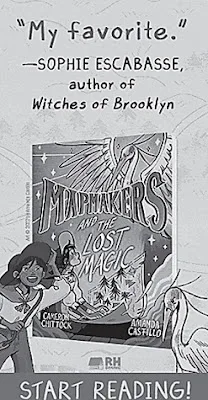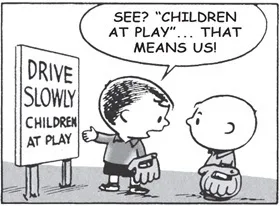Simulado de Inglês (17) de Interpretação de Texto e Compreensão Leitora para o 6º ano, 7º ano, 8º ano e 9º ano com gabarito.
Download do conteúdo disponível no final da publicação
Leia o texto e responda às questões 1 e 2.
Digital citizenship
Everyone’s talking about ‘digital citizenship’, but what is it?
We use the word ‘digital’ to talk about computer technology. Being a ‘citizen’ means that you belong to a group of people.
Digital citizens can use technology to communicate with others online and know how to use the internet in a safe and responsible way.
Are you a good digital citizen? Here are some ways to be safe and responsible online.
1 Stay safe
To stay safe, never give your personal information online, such as your address or the name of your school.
Make sure that you create strong, secure passwords and keep them secret. Don’t tell your friends your passwords.
2 Show respect
Just like in real life, it’s important to behave well online. For example, if you want to post a photo of someone, make sure you ask for their permission first.
Remember that everybody can have their own opinion. It’s OK to disagree, but always be polite!
3 Be kind
Before you post a comment online, stop and think. Is it positive? How will your words make someone feel? Don’t say something online that you wouldn’t say in real life. […]
4 Be careful
Don’t trust everyone or everything online. Remember that people online are not always who they say they are.
Never open emails from strangers, click on strange links or download apps without asking na adult. They could contain viruses. If you’re not sure, ask your parents or teacher!
Spending time and learning online can be great if we’re good digital citizens. So, be safe, be responsible and have fun!
learnenglishkids.britishcouncil.org
1. (CAEd) A informação principal desse texto está no trecho:
a) “Digital citizens can use technology to communicate with others online and know how to use the internet in a safe and responsible way.”.
b) “To stay safe, never give your personal information online, such as your address or the name of your school.”.
c) “Just like in real life, it’s important to behave well online. For example, if you want to post a photo of someone, make sure you ask for their permission first.”.
d) “Never open emails from strangers, click on strange links or download apps without asking an adult. They could contain viruses.”.
2. (CAEd) Nesse texto, no trecho “Before you post a comment online,”, a palavra destacada indica
a) adição.
b) causa.
c) conclusão.
d) tempo.
Leia o texto e responda às questões 3 – 5.
A bear named Sue
I have a bear
And her name is Sue
She can do anything that I can do
I can do anything that she can do.
In the morning I stretch and Sue does her best
I put on trousers and a shirt and Sue wears a skirt
On with my socks and on with my shoes
And on goes the same for dear old Sue
And we’re ready for breakfast in the twinkling of an eye
So we go downstairs my Sue and I.
I’m hungry. Can we go downstairs and have some breakfast?
A cup for Sue, a cup for me
Sue likes apple juice but I like tea
I like juice and she likes tea.
Hot buttered toast. Who can eat the most?
Cover it in jam then wash our sticky hands
Down with our breakfast and on with our coats
And now for the part that we like the most
And we’re ready for play in the twinkling of an eye
So we go outside my Sue and I.
Yes, we’re ready for play in the twinkling of an eye
So we wave goodbye my Sue and I
Goodbye, goodbye, goodbye
bit.ly/3OUGu4N
3. (CAEd) De acordo com esse texto, antes do café da manhã, Sue veste
a) calças.
b) camisa.
c) casacos.
d) saia.
4. (CAEd) Nesse texto, no verso “Cover it in jam…”, a palavra em destaque tem o mesmo sentido de
a) abrigar.
b) cobrir.
c) copiar.
d) tapar.
5. (CAEd) Nesse texto, no verso “I can do anything that she can do.”, a palavra destacada foi utilizada para
a) expressar habilidade.
b) indicar pedido.
c) marcar permissão.
d) sugerir probabilidade.
Leia o texto e responda às questões 6 – 8.
Magpies Outsmart Researchers
A group of Australian magpies have taught the scientists who were studying them na unexpected lesson.
The scientists were trying to develop a way of tracking where the birds go. They needed a
“GPS” tracking system that was light enough for a small bird to wear. […]
They chose the Australian magpie for their first trial. Magpies are about 36 to 44 centimetres long and weigh about 300 grams — about the same size as a pigeon.
The researchers set up feeding stations in an area that was home to a group of magpies. After six weeks, they set soft net traps on the feeding stations and caught five magpies for their trial.
The birds were fitted with GPS harnesses, and bands were attached to their legs so they could be identified. Then they were released.
Almost immediately, the researchers saw one bird pecking at its harness. Two birds that had not been trapped came up to the first bird and pecked at the harness as well. Within half an hour, one of the “helper” birds found the magnetic clasp and snipped it with its beak. The harness fell off.
Then the researchers saw a different magpie help remove another one’s harness. Altogether, they saw four birds being helped out of their harnesses. By the fourth day, all of the harnesses were off.
The researchers were disappointed that their harnesses didn’t work. But they realized they had learned two important things about the magpies.
One was that the magpies are able to solve difficult problems, like figuring out how to remove the harnesses.
The second lesson was that several other birds helped a bird that they thought was in trouble. […]
CONROD, Monique
6. (CAEd) Qual é o assunto desse texto?
a) A pesquisa desenvolvida por cientistas em uma localidade da Austrália.
b) A qualidade do material utilizado em uma pesquisa realizada com as aves.
c) As aves que conseguiram se livrar de rastreadores instalados por pesquisadores.
d) As características das aves típicas da Austrália que estão sendo pesquisadas atualmente.
7. (CAEd) A linguagem desse texto é, predominantemente,
a) arcaica.
b) científica.
c) coloquial.
d) formal.
8. (CAEd) Nesse texto, no trecho “Magpies are about 36 to 44 centimetres long and weigh about 300 grams…”, a palavra destacada indica
a) adição.
b) conclusão.
c) condição.
d) explicação.
Leia o texto abaixo.

bit.ly/3bxEOjf
9. (CAEd) Entende-se desse texto que
a) a tartaruga está cansada de caminhar.
b) a tartaruga prefere ficar em silêncio ao caminhar.
c) o dinossauro costuma falar sem parar.
d) o dinossauro gosta da companhia da tartaruga.
Leia o texto abaixo.

bit.ly/3F0uTNR
10. (CAEd) O objetivo desse texto é
a) apresentar uma opinião.
b) contar uma história.
c) dar uma instrução.
d) fazer uma propaganda.
+ Simulados de Inglês para os Anos Finais
Confira nossa página repleta de conteúdos semelhantes, especialmente desenvolvidos para esse público escolar. Materiais pedagógicos de alta qualidade, cuidadosamente preparados pelos produtores do Tudo Sala de Aula. Clique agora e escolha o tema da aula!
Por favor, não compartilhe o PDF!
Reiteramos que todo o conteúdo do site Tudo Sala de Aula é original, produzido por equipe própria. Portanto, este material, assim como os demais, não pode ser publicado em sites pessoais ou copiado para a criação de apostilas para venda. Pirataria é crime! Estamos de olho! (Lei 9.610/98)

Redação Tudo Sala de Aula
O Tudo Sala de Aula é composto por especialistas dedicados à produção de conteúdos educacionais de qualidade.





